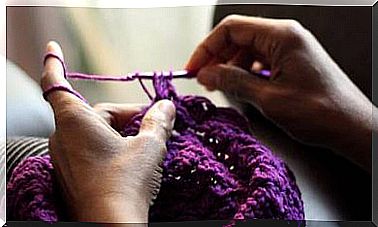Learn To Say No In Just 6 Steps
Do you choose what you need and want or do you want to please others? Get out of that circle! With these six tips, you will know how to say no without feeling guilty.

Connect with what you feel and want
Contact with ourselves allows us to perceive what we need and want and at the same time detect what hurts us and does not feel good.
Feeling the bodily sensations and emotions can lead us to achieve well-being. That contact is our guide to knowing when to say “enough” to a situation or relationship. It is the first step to knowing how to say no.
In Gestalt therapy we believe that from that very realization, the necessary energy will be released to take the action that solves the situation that damages us.
Review your beliefs and values
In the same way that when I discover that I do not like something or it hurts me, I get the energy to take action, I can also repress it. If I think I
have no right to express it, I will block it. So to learn how to say no, I first have to review what my beliefs about myself are.
Am I a unique being who has the right to show himself as he is? Can I say what I think regardless of what others think? Or on the contrary, I think that what I want is not worth it and I better keep quiet.
Ultimately, only we can give ourselves the courage to say what we need, regardless of what others think or say.
Dare not to always look good
Social norms help us feel safe, but many times, beyond their function, they trap us and do not allow us to be transparent. Saying no when everyone agrees can be embarrassing.
Women are educated to take into account the other before ourselves, that is why it is more difficult for us to face opinions.
Going beyond the limiting conventions and assuming a certain burden of guilt can come in handy to become freer.
The positive side of aggressiveness
Humans belong to the animal kingdom and we share with them four basic emotions: anger, sadness, fear, joy. These allow us to adapt to the constantly changing environment , they are all necessary to us.
Aggression, beyond its negative connotations, is what allows us to take action and change things.
Recognizing that we have this capacity for action and dealing with it as a potentiality, within our range of tools, is a necessary step to learn to say no.
Practice no on small things
If we are not used to saying “no”, it will be difficult for us to take action the first few times. Things are only learned by practicing and doing them.
Start practicing and say “no” to things that are not very important to you, so you can see what happens: most of the time nothing happens and if it does, one can explain their reasons and argue with others the reasons why those who said no.
In the workshops that I carry out, we do an exercise in which people stand in two lines face to face, one of them only says “yes” and the other only says “no”. You can practice to find out how you feel and what your difficulty is.
Say “no” to change the world
Thanks to the fact that our ancestors said “no”, we can vote; Thanks to the fact that blacks in the US said “no”, they now have equal rights.
Sometimes we are afraid of conflict and its consequences. In these cases, it can help us to see no as an engine of change.
If I allow myself to say no, I also give the other permission to express their disagreement and be authentic with what they want and like. Saying “no” is the first step to having a communication or relationship based on authenticity and mutual respect. Is this the kind of relationship you want?









